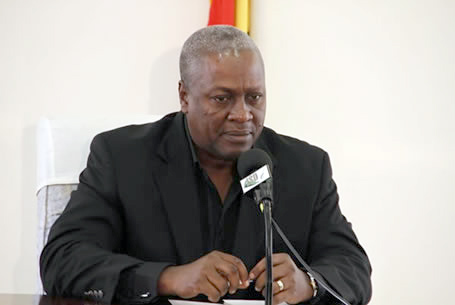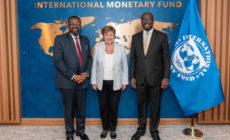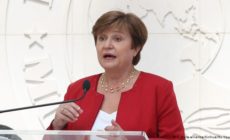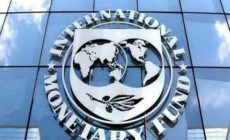Figures presented by Ghana gov’t are inaccurate; grossly massaged – IMF
- Posted on
- Comment
 As the Mahama administration dispatches Ghana’s negotiating team with the International Monetary Fund (IMF) to Washington in the United States for further talks on the financial bailout, the IMF says figures presented by the government are not accurate and that they have been grossly massaged.
As the Mahama administration dispatches Ghana’s negotiating team with the International Monetary Fund (IMF) to Washington in the United States for further talks on the financial bailout, the IMF says figures presented by the government are not accurate and that they have been grossly massaged.
According to the IMF, it has detected disparities in statistical figures churned out by the Bank of Ghana (BoG) on Ghana’s economy during its recent discussions with government in Accra.
Reacting to a question at a Fiscal Monitor Report briefing in Washington on Wednesday, Sanjeev Gupta, Deputy Director, Fiscal Affairs Department, said Ghana’s debt profile is over 70 percent of GDP and not 55 percent as claimed by the Bank of Ghana.
“First of all, the debt-to-GDP ratio in Ghana is 71 percent, not 60 percent; so it is much higher than you mentioned. I think you raised the question whether countries should be borrowing abroad or not. I think it is a very good idea to be able to borrow the money and use it effectively for development and building infrastructure. What we have noticed, not necessarily in the case of Ghana, but in many other countries, is that increases in that borrowing has not necessarily been accompanied by higher spending on infrastructure on the capital side, but has been accompanied by increase in spending on the current side. So, that has an impact on the ability to repay this debt,” Gupta said.
The IMF’s revelation of economic-data massaging tallies with the observations of Dr Mahamudu Bawumia, a former Deputy Governor of the Bank of Ghana and running mate to the 2012 NPP presidential candidate, Nana Akufo-Addo, that figures released by the BoG, especially on inflation and the country’s debt portfolio, are questionable because they don’t make economic sense in view of market trends.
Ghana has been caught in huge debt repayment three times more than the proceeds from oil revenue—which the IMF says is not sustainable.
According to the IMF, Ghana’s public debt situation could reach over 70 percent of the country’s total economic output by 2015 per its assessment of Ghana’s actual public debt.
On the country’s debt levels, he said “given that there was pressure mounting within the system itself, it would be a good idea to consolidate sooner than later and this would entail trying to restrain pressures on wages, containing the outlays on subsidies.”
Job Cuts
Gupta noted that government would have to take tough measures to address the situation, adding that Ghanaians are likely to feel the pinch of the restructuring measures to be instituted from January next year.
There are speculations that government is contemplating downsizing its work force in the coming months because of what it called huge wage bills.
A report by the IMF’s Fiscal Monitor painted a gloomy picture, indicating that Ghana’s situation could be dicey because anytime a country’s debt exceeds 60 percent of its total economic activity, its stability gets threatened.
The report details the expenditure and revenue mobilisation trends of governments the world over.
Doctored Figures
It said while the Bank of Ghana stated that the country’s actual public debt was 55 percent, translating into GH¢58 billion, its figures revealed that the public debt was over 60 percent.
“Ghana’s public debt has even crossed the 60 percent mark level, which will make it difficult for government to service these debts on time,” the report noted.
The development points to the fact that Ghana’s debt has reached a level that can be likened to that of a Highly Indebted Poor Country (HIPC); but government appears to be massaging the figures.
A government delegation from Ghana is currently in Washington to continue negotiations after initial discussions in Accra.
President John Dramani Mahama recently convened a high-level meeting of all ministers, deputy ministers and other senior government appointees to deliberate on a broad range of issues relating to the performance of the economy over the last three quarters.
The key issues discussed included gains made by the Ghana Cedi against the major trading currencies and progress made so far in negotiations with the IMF over a new three-year programme, with the government officials patting themselves on the back for stabilising the cedi at over GH¢3.3 per dollar, having risen to GH¢3.9 about two months ago.
The cedi was trading at GH¢2.2 to a dollar at the beginning of the year before its free fall, rising to GH¢3.9 in August.
By Samuel Boadi










 (Selorm) |
(Selorm) |  (Nana Kwesi)
(Nana Kwesi)